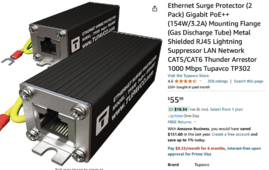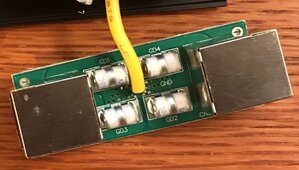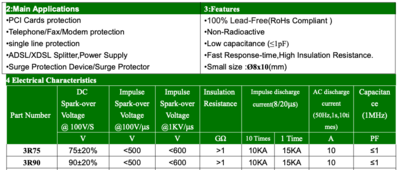Well I agree to a point -
What I don't understand is how an electronic device can have a finite pool of joules it can disipate then it is done.... you either exceed the voltage/current or you don't. If you don't it should keep working just as well until you do exceed them.
So I am curious how something can be gradually eaten away and fail.
I agree with you as I don’t understand how but it seems to be the way it works…
They do cumulatively wear out unless a whopper surge takes it out at one time…
This was explained to me on the phone by the head dog at the hughes company who puts out the Watchdog series of SPD devices for RVs …
it was also explained on the phone to me by a tech at MS who makes the multiple SPDs I have on my PV system…( seperate from the RV.)
On the MS units if the blue lights are still on you still have protection …but if they go out after being used a while they have been used up and need replacing..) I have not had issue with any of the MS devices after at all… so I can’t speak to how often this could happen…probably depends how often it take a small hit ….or a big one…dunno.
I use two per array , both at the array…. and at the gear shed entrance …and every other wire entering the gear shed ..they all connect to one central grounding point.
That’s the best I can figure to do..
On the watch dog SPD device ( 50 amp) version , it is a much heavier ,expensive and more robust SPD ..
It protects the RV that’s plugged into it…and it did great for the first 4 years I owned it…
But like the MS device once it has used up the MOV protection it will flash an error code saying there is no more protection…it will work with no protection left but there is no protection for downstream circuits.
you can replace protection by swapping out protection modules yourself , so I bought a couple of the modules as spares….35 bucks ea..I have never replaced a module …I never needed to.
If a strong enough surge hits your wiring ,as it did to me when the power company guy came out and went up the pole and disconnected the power it created a large arc …I dint know what he did but it made a racket and flashed.. I think he screwed up somehow trying to hurry , not sure what he did…….l
I didn’t know he was doing it and had about 30-40;amps of 120 ac load running in the RV .. I would have turned stuff off and disconnected it all but he just rolled up and went up the pole and Bammm
It killed all power and it also killed my watch dog TOTALY…
Once the power was restored it refused to come on and work and blinked an odd error code…
The RV was un damaged but the Hughes had killed itself in its efforts to protect .
I called the huges company and explained…
He sent me a new unit , “no charge” , and he explained a lot about how they work…
They do wear down in protection… ..OR , if it’s a large event or close lightning surge it may totally use it all up in one event……sometimes it not survive… but it will probably save your property , unless it’s a direct strike, then your probably screwed
Mine didn’t survive but it stopped any damage to an sorta new RV.…
It’s been 4 more years since then and the replacement unit has worked great when surges and strikes have knocked out devices on the property but not under the Watch dog circuit. It has saved me several times when everything around me got a zap except the RV…and we’re all on the same grid connection..
I think they are great units ….
On a side note , I have missed see mentioned here , Both the manual, videos for MS units and verbal discussion with them on the phone stress not to let the 3 wires from the unit touch any other wires after being installed ……I had mine zip tied to be neat and orderly … evidentially I was wrong…
So now they are pretty much free floating or separated from other wires..
From what I have read and was told if a major strike comes in near the equipment the wires will possibly vaporize ( there words not mine) ..this can cause damage to other wire or material touching them and cause other problems..
As I have stated in previous posts.
I don’t really understand lighting real well and I don’t like it at all.
J.









